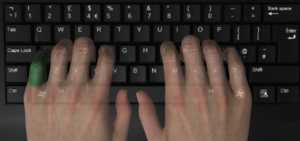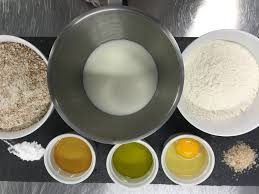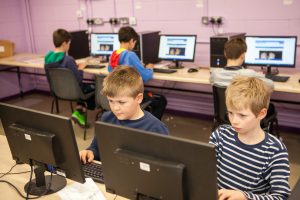What is the benefit of having a typing speed of 10, 25, and 40wpm?

For most people, learning to type is as much about developing a typing speed as it is about discovering what fingers to use on alphabet keys on the keyboard. After all, while typed copy allows for a more professional printed presentation of your work, what would be the point of typing if it did not also offer you a means of producing work quicker than it would take you to write it?
The great thing about typing is that not only can it help you speed up your work output, but it is also so much easier to do than writing. Whereas with writing you have to hold and control a pen in your hand while guiding the copy or paper you are working on with the other hand – typing requires nothing more than placing your fingers on a keyboard and pressing characters as you need them.
Typing also allows you to maximise the use of your hands, as with proper touch typing, you use all your fingers on both hands to type your words on a screen. Writing, by contrast, requires you to use your entire hand in just one movement at a time, so that for those who find writing difficult, it can be a struggle just to form the letters and words.
Trying to write properly also forces your attention onto the very act of writing, with the result that all you are thinking about is the very act of forming words. Typing instead frees you up from having to worry about shaping letters and moving your hand along a page, so that you can think creatively about the content of what you are writing about.
Typing has so many other advantages – it is convenient, it makes it easy to share documents, you can print up your work and it also looks so much better than written work.
TYPING SPEEDS
The real beauty of typing is the speed at which it can help you put words on paper. Typing is so much faster than writing, once you grasp the proper touch type skill, whereas writing, in fact, becomes more and more illegible the faster you attempt to write.
Therefore writing is limited in scope as a means of producing written work and it is no small wonder that typing is now regarded as a valuable skill children need and that since 2013 American children have been required to learn how to use a keyboard and printer.
In terms of typing speeds for children, at the national school level, a typing speed of 10wpm is generally regarded as sufficient in order for students to be able to present their work without errors.
As children grow older and move to higher grades, faster speeds are recommended in order to keep up with the pace and volume of their educational work.
Generally, a typing speed of around 20-25wpm is recommended after Junior Cert, rising to 30wpm and above at Leaving Cert level.
Students who do not learn proper touch typing and become self-taught two-finger typists will also find they fall behind as time goes on because these so-called Hunt and Peck typists are expected to achieve a maximum speed of just 30wpm under this method.
When you consider that a typing speed of 45wpm and higher is required as a basic skill in many jobs and that an average professional typist types at up to 80wpm, you can see just how useful proper touch typing proves in the real world.
Given that a speaking pace of between 150-160wpm is the rate at which a person can be comfortably heard and understood by an audience and that conversational English is spoken at around 110-150wpm, typing at 80wpm or more should enable you to catch every second word of what your teacher or lecturer says in school or college. Think how useful this would prove for your study notes!
The reality is that once your touch-type training really kicks in, the whole system clicks into place until, suddenly, you find yourself typing faster and faster, so fast you can hardly keep up!
Naturally, the more time you practice touch-typing, the quicker your typing speed becomes. Eventually, you will achieve a maximum typing speed to suit you and your work so that whenever you have to type anything, you will be able to do so at a high speed.
STUDIES ON TYPING SKILLS FOR CHILDREN
Some research carried out around typing skills for children reflects the fact that typing is hugely beneficial as an educational tool.
For example, in Australia, educational scholar Carol Christensen, who offered a group of 35 13-year olds touch-typing classes, 20 minutes a day over eight weeks – reported that the quality of writing and prose produced by the children rose significantly, as compared to other students who were not taught to touch-type.
Ms Christenden noted:
“By facilitating students’ ability to put letters and words on the page, they increased their ability to produce text that was creative and original, more technically accurate, more logically sequenced and better organised, and showed greater pragmatic awareness and sensitivity to audience.”
Another research project took place in Massachusetts, USA, where tutor Michael Russell divided a group of students between grades 4 and 8 and had them write essays on a keyboard and by hand.
He found that students that who had typed, produced longer essays, used slightly better English, and developed topics more comprehensively. The grade 8 students who typed fastest of all (around 32wpm) had the highest scores of all.
FAST TYPING FOR FAST LIVING
In a nutshell, typing is an ideal skill to have in modern society as we now live in a fast world where people want to act and think and produce work as fast as possible. Typing at speed makes this possible so that, once you learn to type as fast as you think, there will be no stopping you! So if you want to learn how to touch type why not book a free first session at one of our nationwide typing centres. To available of this offer is select the book free trial from our website https://searsol.com/find-centers/



























